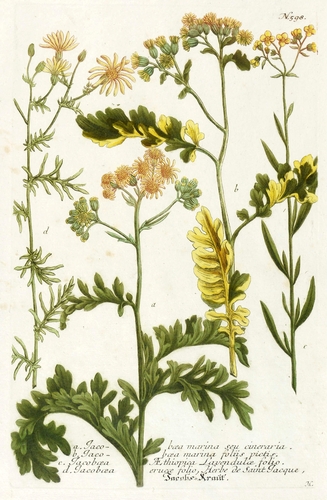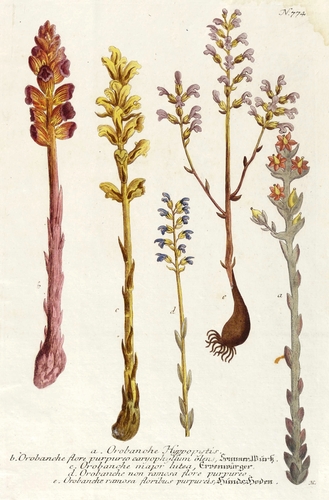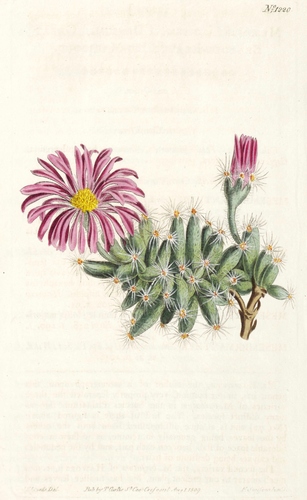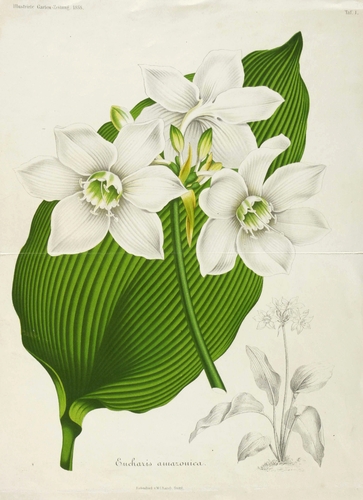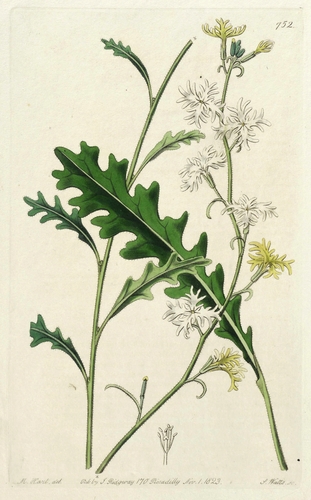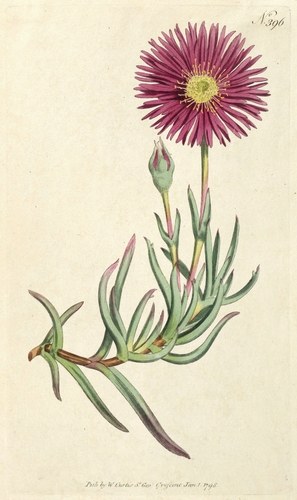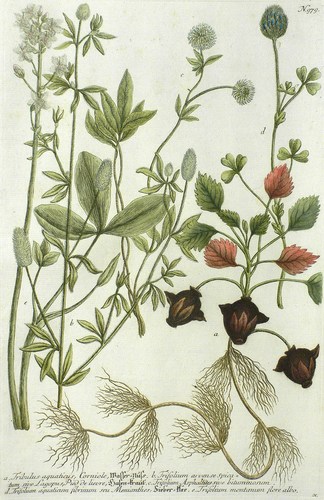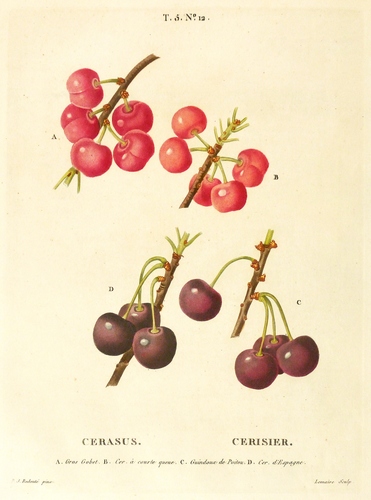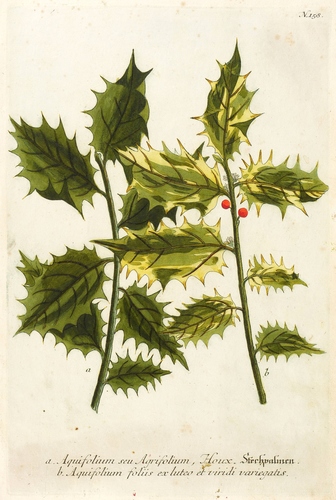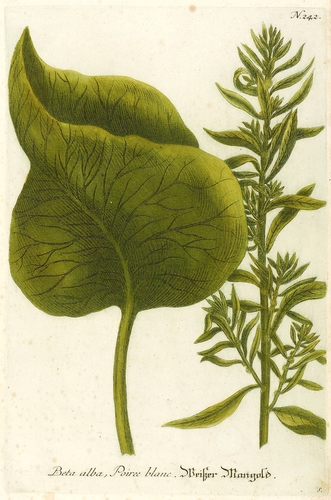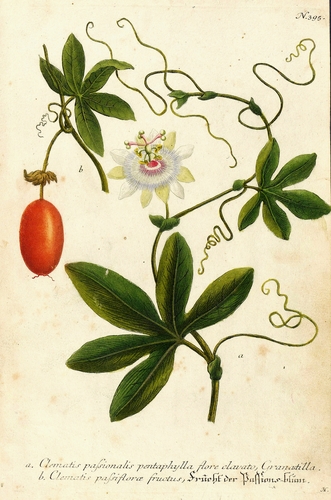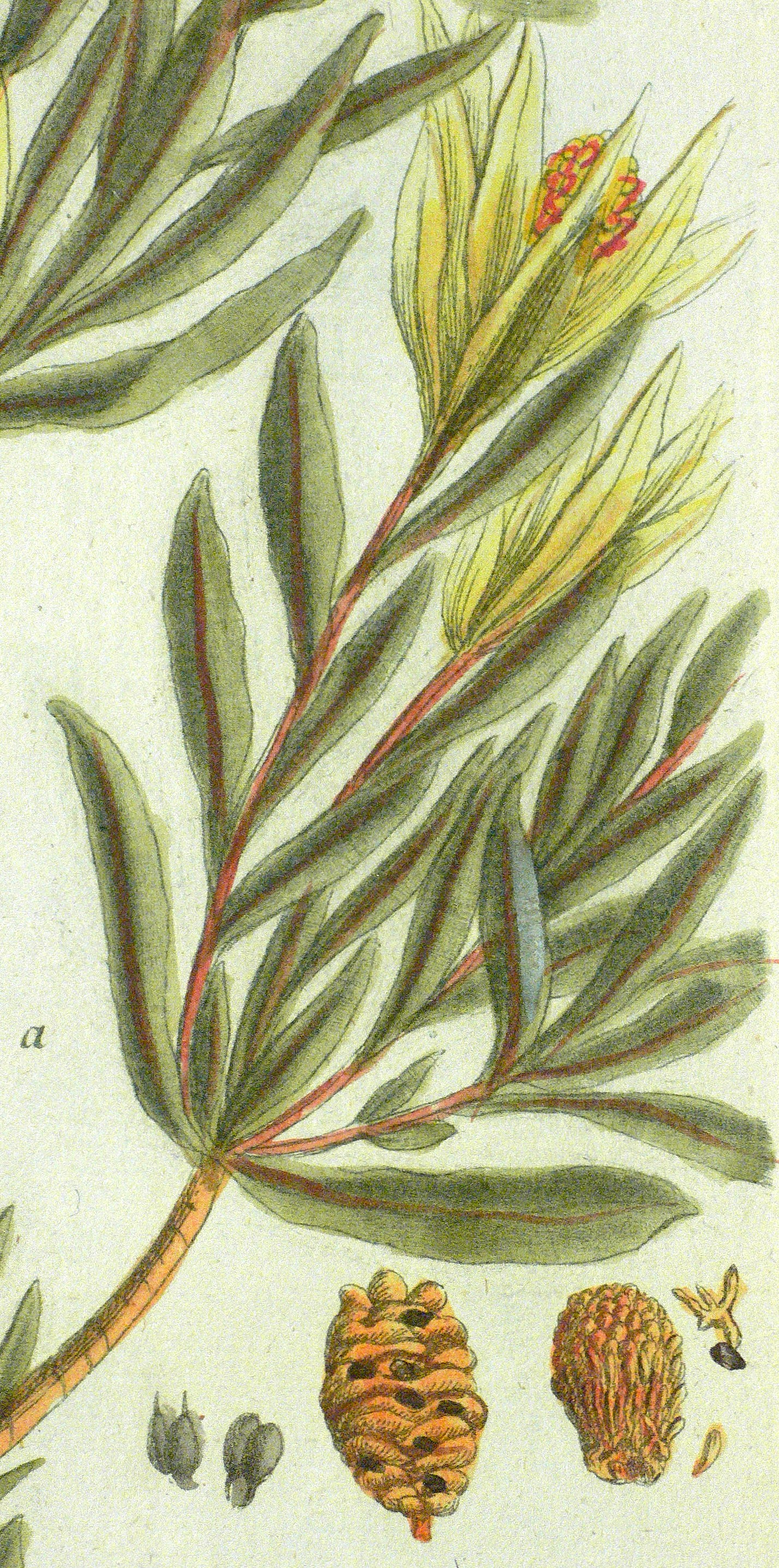

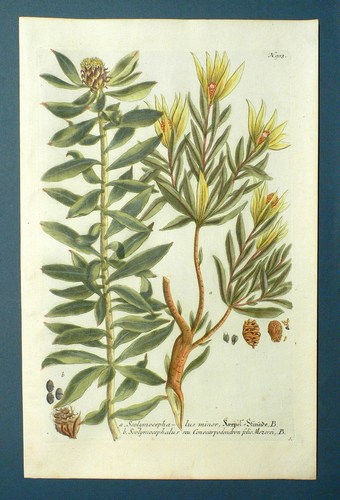

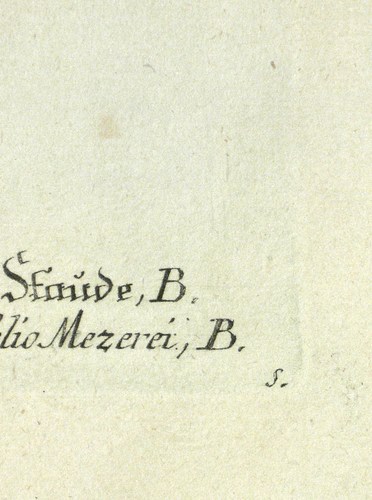
Silberbaumgewächse (Proteaceae). – Weinmann. – „Krepel-Staude”.
1745. Kupferstich / Mezzotinto, alt koloriert. – Historische Pflanzendarstellung, von Bartholomäus Seutter. – 33,3 x 21,3 cm (Darstellung / Platte), 38,5 x 25 cm (Blatt).
80,00 €
inkl. MwSt. zzgl. Versandkosten
inkl. MwSt. zzgl. Versandkosten
6,00 € Deutschland
14,00 € Europa
32,00 € weltweit
14,00 € Europa
32,00 € weltweit
Aus: Johann Wilhelm Weinmann, Phytanthoza-Iconographia Oder Eigentliche Vorstellung Etlicher Tausend, So wohl Einheimisch- als Ausländischer, aus allen vier Welt-Theilen, in Verlauf vieler Jahre (...) gesammelter Pflantzen, Bäume, Stauden, Kräuter, Blumen, Früchten und Schwämme (Regensburg: Lentz 1745), Bd. IV. – Rechts unten Signatur, rechts oben Tafel-Nr. "903", unterhalb ausführliche Inschrift. – Bei der Herstellung der Tafeln arbeiteten die Augsburger Künstler Bartholomäus Seutter, Johann Jakob Haid und Johann Elias Ridinger zusammen. Die Kupfer wurden in einer für die Zeit revolutionären Weise farbig gedruckt und sodann partiell von Hand koloriert. Dabei fand der von Seutter weiterentwickelte Mezzotinto-Farbdruck des Niederländers Johannes Teyler Anwendung. – Kräftiges Büttenpapier und wohlerhaltenes Kolorit. Guter Erhaltungszustand.
Bartholomäus Seutter (1678 Augsburg - 1754 Augsburg). Auch Bartholomäus Seuter. Deutscher Goldschmied, Emailleur, Porzellan- und Fayencemaler, Kupferstecher, Schabkünstler und Verleger. Bemalte u.a. die Keramiken seines Bruders, des Augsburger Goldschmieds und Feuermalers Abraham Seuter (1699–1747). Übernahm und verbesserte das Mezzotinto-Farbdruckverfahren des Niederländers Johannes Teyler. Lieferte in Zusamenarbeit mit Johann Jakob Haid und Johann Elias Ridinger die Platten zu Johann Wilhelm Weinmanns Phytanthoza-Iconographia (1737-45).
Kategorien:
- Augsburger Barock
- Blumenbuch
- Historische Pflanzendarstellung
- Proteusgewächse (Proteaceae)
- Silberbaumgewächse (Proteaceae)
Folgende Werke könnten Ihnen auch gefallen:







 Haben Sie Fragen zu diesem Kunstwerk? Rufen Sie uns an:
Haben Sie Fragen zu diesem Kunstwerk? Rufen Sie uns an: